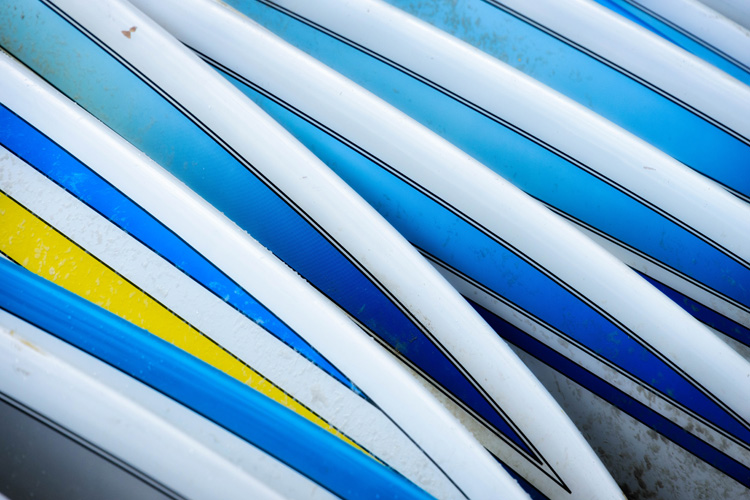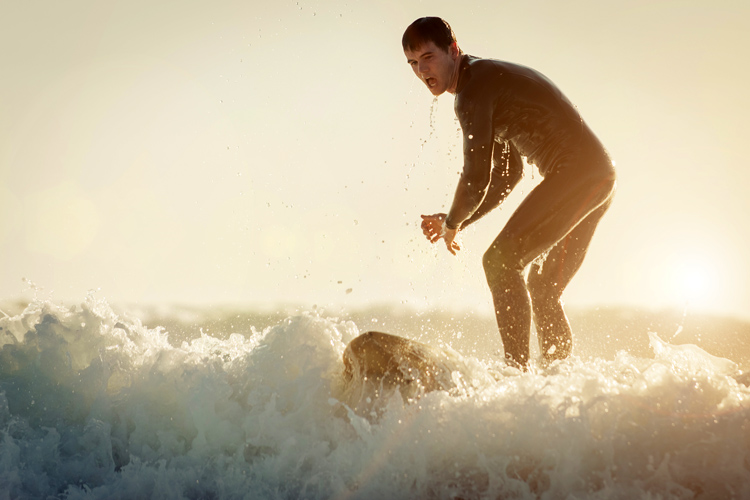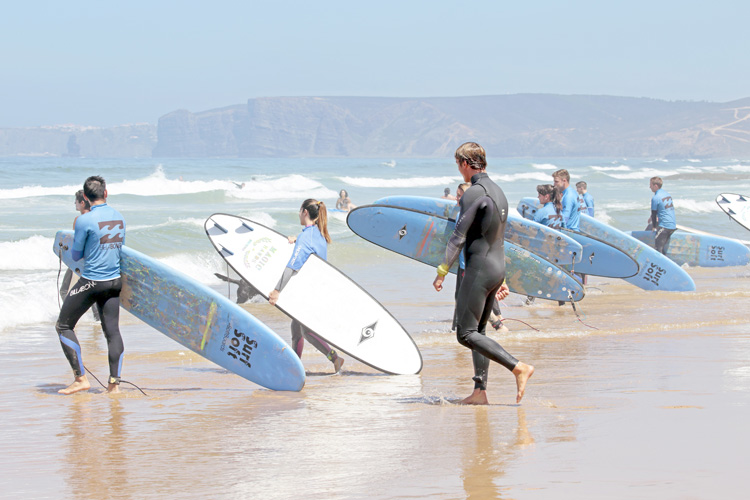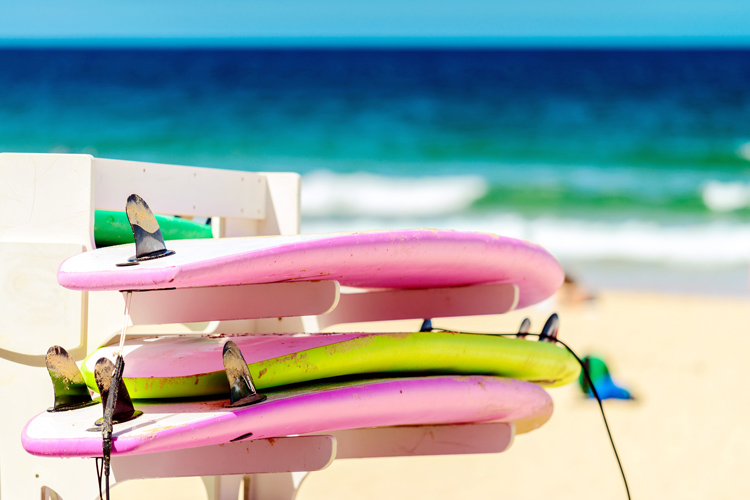Beginner surfboards are a key piece of equipment for learning to surf.
Whether you've booked a few surf lessons or decided to learn by yourself, the so-called soft-top surfboards are the right tool for early surfing attempts.
There are hundreds of beginner surfboards on the market, and sometimes, finding the ideal equipment can be complicated and confusing.
One of the first myths that must be debunked is that foamies are low-quality surfboards.
That is just not true. Beginner surfboards were specifically designed to help first-timers in the sport.
In fact, they were built with a single goal: to help novice surfers stand up on the board fast and easily and accelerate the learning process.
There are two types of beginner surfboards: soft-top surfboards and pop-out surfboards.

Soft-top surfboards, also known as foamies, are boards with a soft, cushioned top deck and a slick HDPE bottom deck.
They're the most popular choice among surf schools.
Pop-out surfboards are mass-production boards, usually built from PVC or other plastics.
They can be pretty heavy and awkward to turn, so they're not the best option for learning to ride a wave.
But why are beginner surfboards really a smart choice for getting into surfing?
1. Stability and Buoyancy
The most common problem people face when learning to surf is difficulty finding balance on the surfboard.
In other words, when they're catching their first waves, they fall off the surfboard a lot.
Because they provide high volume and are incredibly buoyant, foamies deliver the stability beginners need to pop up and ride toward the beach.
2. Resistance and Durability
When you're learning to surf, wipeouts are more frequent than successful rides.
Many times, you will lose control of the board, and it will hit nearby boards, rocks, heads, and other human bones.
Because they're built to last and absorb high impacts, beginner surfboards won't need ding repairs and offer high longevity.

3. Comfort and Safety
It is always good to know that you're learning to surf on a safe board. Whenever you're paddling, you'll feel the smooth cushion under your chest.
And if, for any reason, the board hits you, it won't be as painful as a standard fiberglass surfboard. Foamies do, indeed, minimize injuries.
4. Accessibility and Affordability
A soft-top surfboard is often a big board (7'-9') that can be used by children and adults alike. The good news is that, despite their size, they aren't expensive.
You can buy a high-quality beginner surfboard nearly everywhere, and there's no need to visit a surf shop.
You can buy it online and have it shipped to your door quickly and hassle-free.

5. Highly Fun to Ride
Just because it is a board for first-timers doesn't mean you won't experience the thrill of catching and riding a wave for a few seconds.
Beginner surfboards are incredibly fun to ride, and advanced surfers sometimes use them in small, two-foot summer waves.
6. Forgiveness and Confidence Boost
Foamies were designed to let you make mistakes and still get going.
They are more forgiving than standard shortboards and will simultaneously reduce the initial frustration and the number of early wipeouts.
7. High Selling Opportunities
Have you evolved significantly? Do you feel you need a smaller, high-performance surfboard?
No worries. Selling your first beginner board without losing much money is relatively easy.
